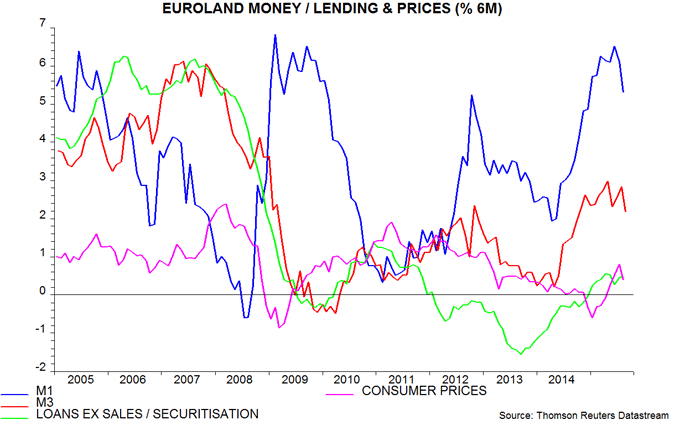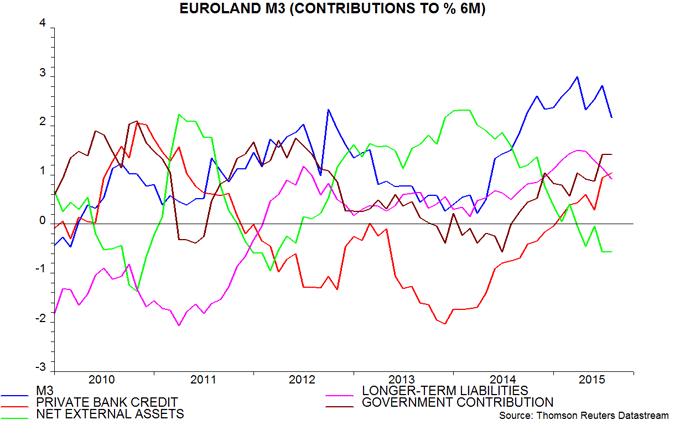Eurozone money trends still positive but little QE impact
A pick-up in Eurozone narrow money (M1) growth from spring 2014 signalled that economic expansion would strengthen while deflationary risks were receding. Recently-revised national accounts data confirm this scenario. GDP grew at an annualised rate of 1.7% between the third quarter of 2014 and the second quarter of 2015, up from 0.7% in the prior three quarters. Domestic inflation, as measured by the annual increase in the GDP deflator, bottomed at 0.7% in the second quarter of 2014, rising to 1.2% a year later.
Note that the monetary pick-up was under way well before the ECB began to discuss QE in late 2014. Rather than QE, interest rate cuts in June and September played a key role, with their impact possibly magnified by the ECB supplying long-term liquidity tied to lowered official rates via its TLTRO programme.
Monetary trends continue to give a positive message for economic prospects, although August changes were softer than in recent months. M1 rose by 0.3% on the month while the broader M3 measure was unchanged. Both aggregates, however, had increased sharply in July and six-month growth rates remain solid, at 5.3% and 2.2% respectively, or 10.9% / 4.4% annualised – see first chart.
Previous posts on UK and Japanese experience argued that QE had little impact on monetary growth, because it triggered offsetting changes in private sector behaviour – in particular, sales (or reduced buying) of government securities by banks and an increase in net non-bank capital outflows (i.e. some liquidity flowed overseas). The evidence to date suggests that the current ECB programme is proving similarly ineffectual: six-month M3 growth of 2.2% in August compares with 2.6% in February, just before QE started. The M3 counterparts analysis confirms a drag from capital outflows: the impact of changes in banks’ net external asset position on six-month M3 growth has moved from +0.1 percentage points (pp) in February to -0.6 pp in August – second chart. In addition, banks sold €51 billion of government securities in the six months to August versus purchases of €41 billion in the prior six months.
Respectable economic growth, reviving inflation and still-positive monetary trends argue against further policy easing. If it were required, there is little reason to believe that additional QE would be effective.



Reader Comments